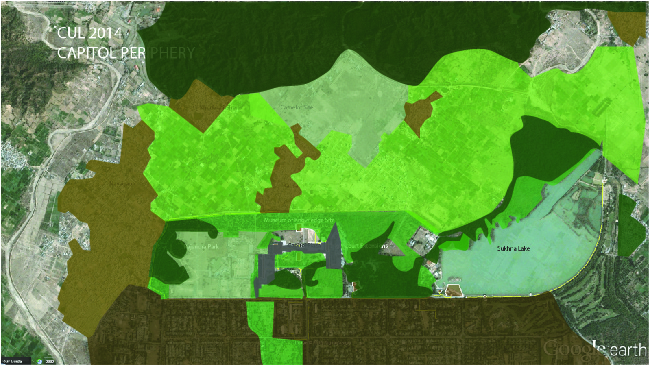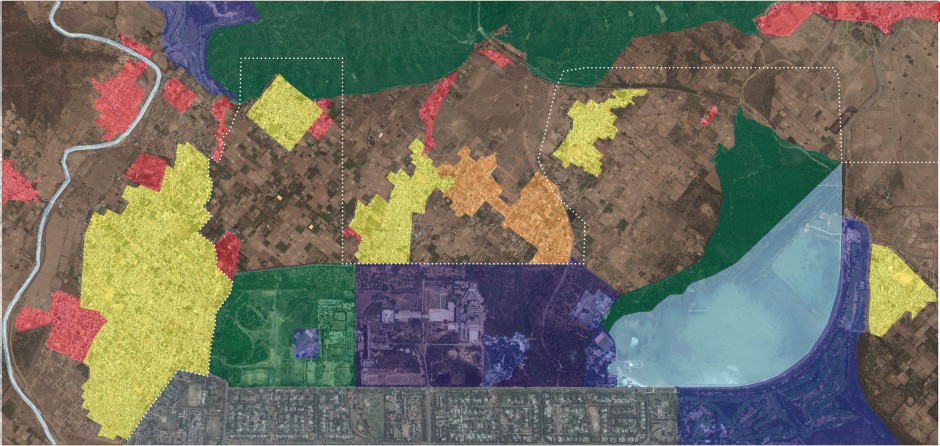The Conditions of Deruralization

The current green cover and land uses clearly show the distinction between the lands of the Capitol Complex and its adjacencies (i.e Sector 1), and the rural hinterland to its North. While the former is characterized by planned uses, the latter is an amalgamation of old agricultural practices and more recent economic development opportunism. This transforming, interdependent relationship can be described as the inevitable process of urbanization, or urban spread, with the periphery characterized as a semi-urban, or peri-urban edge. This assumes that the agent of transformation is the urban, and the object of transformation is the rural, a traditional hegemonic hierarchy that privileges the urban over the rural.
However, this condition can also be view from the standpoint of the rural, as the process of the rural transforming into something new, something like the urban, but not quite the urban. This new condition, descriptive of much of the transforming conditions at the growing edges of the cities of India (and Asia) today, can be described as the condition of deruralization. Over time these conditions may transform into truly urban conditions, or, just as likely, they can remain caught in a zone of transformation, thereby creating a new permanence, neither urban nor rural, perhaps semi-rural, or semi-urban, or neither. This are the current conditions deruralization.‑



Leave a comment